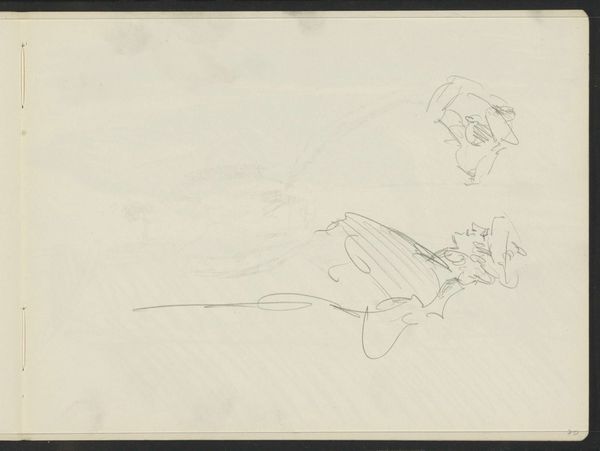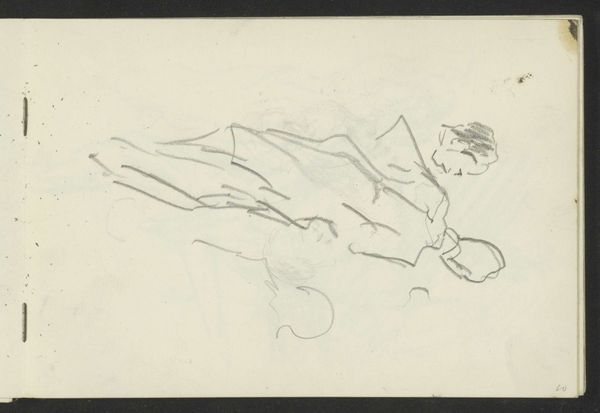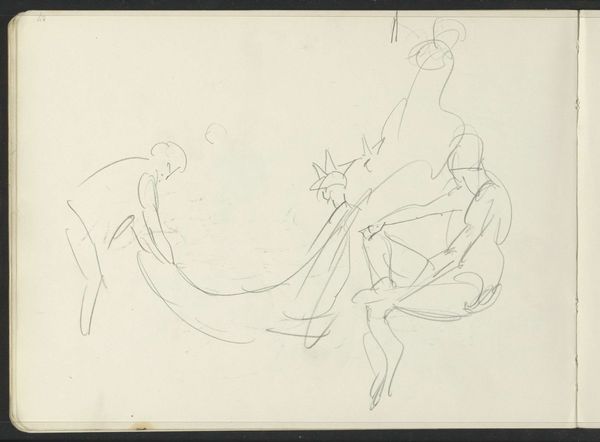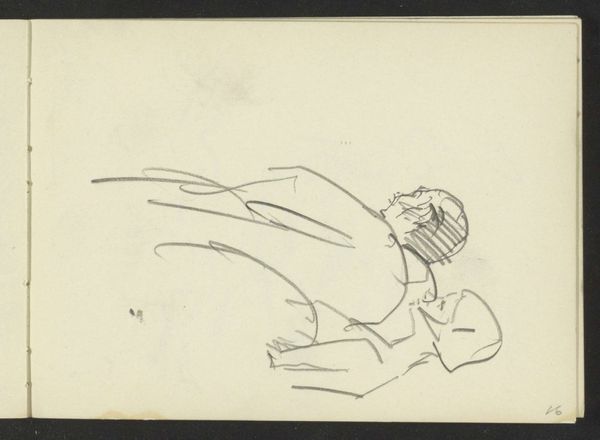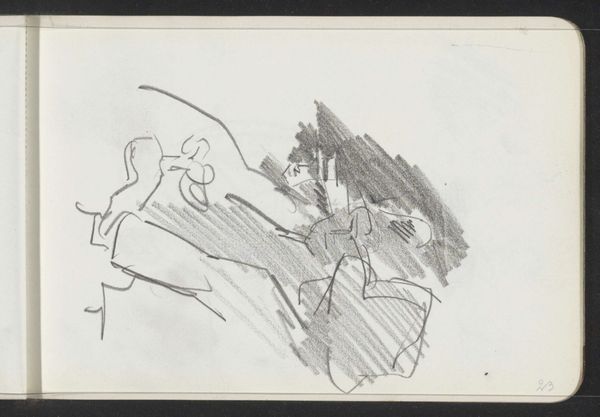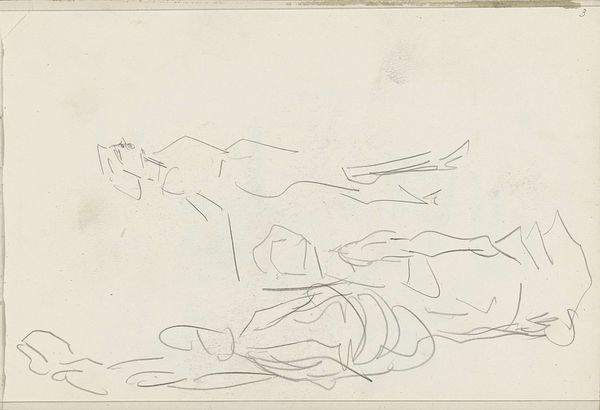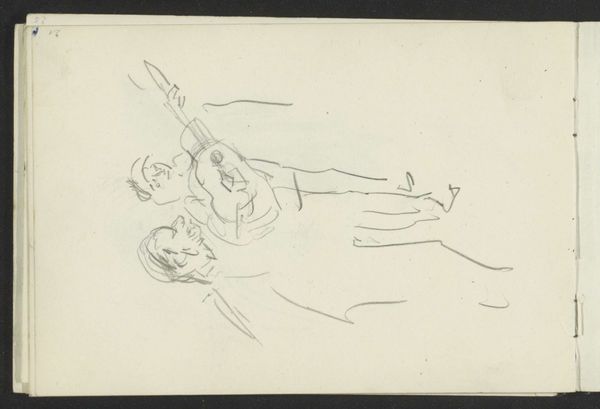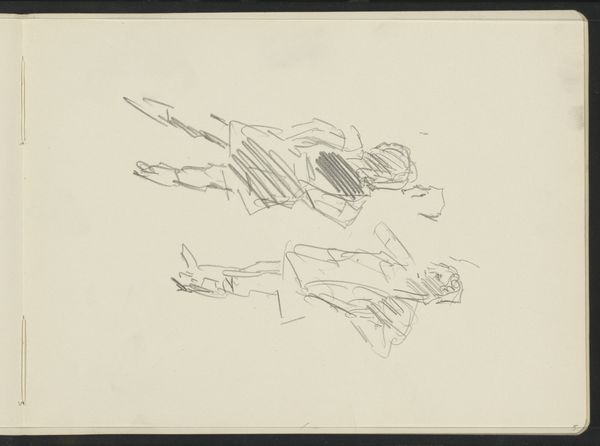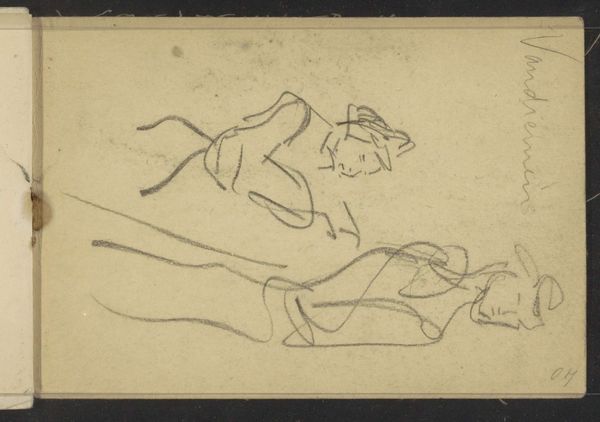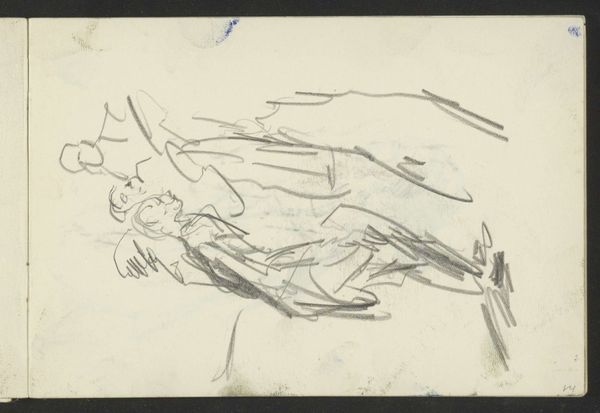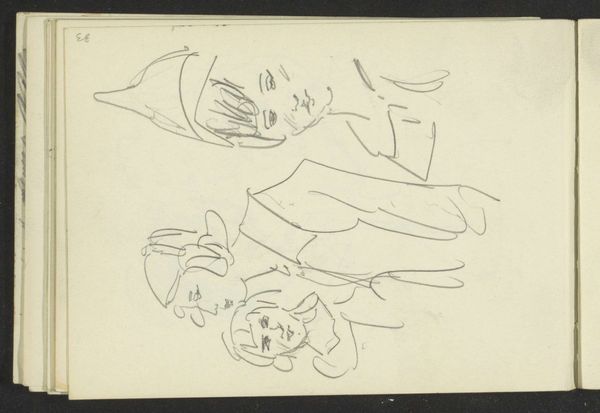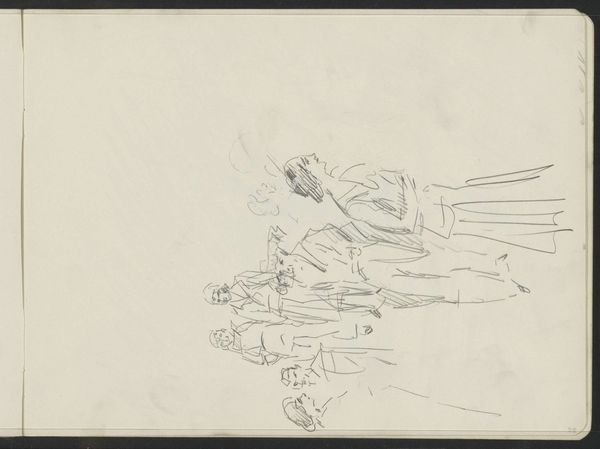
Copyright: Rijks Museum: Open Domain
Editor: Here we have "Figuurstudies, mogelijk artiesten," or "Figure Studies, possibly artists," by Isaac Israels, made sometime between 1875 and 1934. It's a pencil drawing, full of quick, light strokes. I'm immediately struck by how fleeting it feels, like a glimpse into a spontaneous moment. What do you make of this work? Curator: Fleeting is a great word for it. To me, this piece whispers of stolen moments, observations jotted down in a café, perhaps, or backstage at a theater. Israels was a master of capturing modern life, the hustle and bustle, but also the quiet beauty in everyday gestures. Do you see how the figures almost melt into one another, barely defined by the lightest of lines? Editor: Yeah, they're like ghosts almost, fading in and out of the page. Curator: Exactly! It's this incompleteness that I find so compelling. It's not a finished portrait, but rather an impression, a feeling. What do you think Israels was trying to capture with this sense of "unfinishedness?" Editor: Maybe he wanted to show the process of seeing, how things aren't always clear-cut, and that we piece together the world from fragments. It definitely feels more modern because of it, less formal. Curator: I agree completely! It's interesting how he leaves space for our imaginations to fill in the blanks, isn't it? You see the impressionist influence there too, right? Editor: Absolutely! So much more than just documentation, it's capturing an instant. It’s interesting to see how an artist’s working method can add a level of intrigue to a simple pencil drawing. Curator: It is isn't it? It reminds us that art isn't always about perfection, but about feeling and seeing and interpreting. Now, how can we steal his tricks in our sketchbooks?
Comments
No comments
Be the first to comment and join the conversation on the ultimate creative platform.
